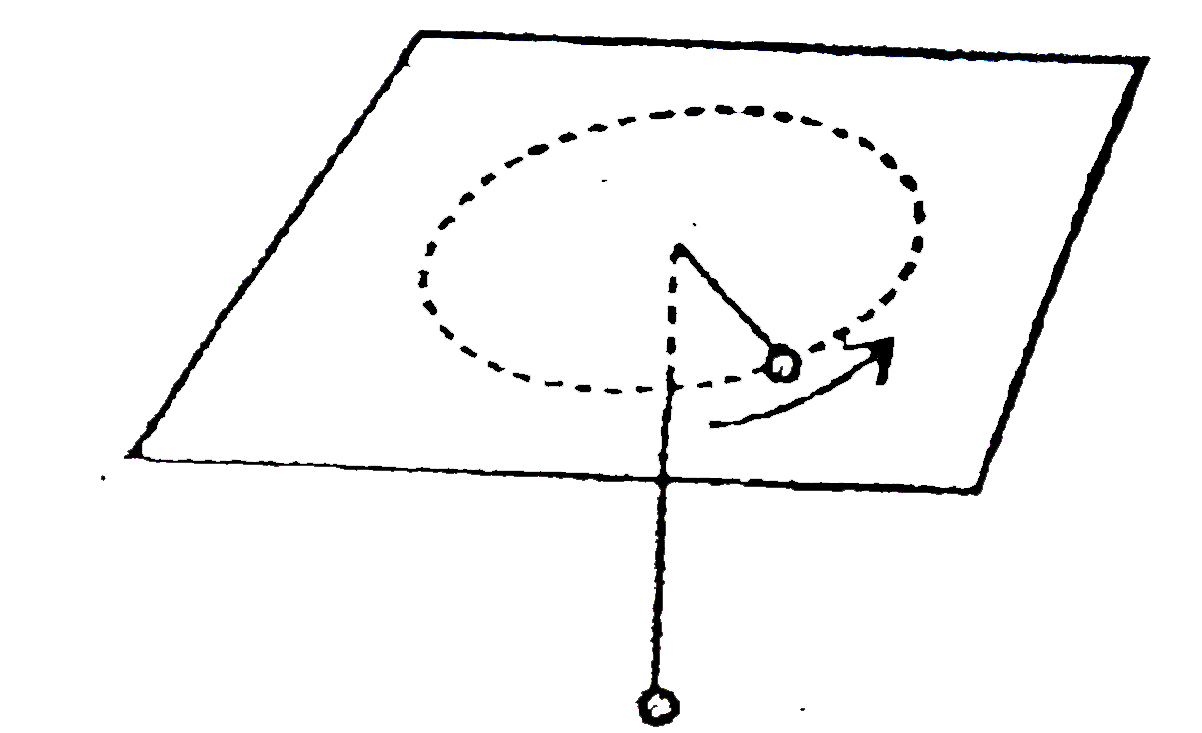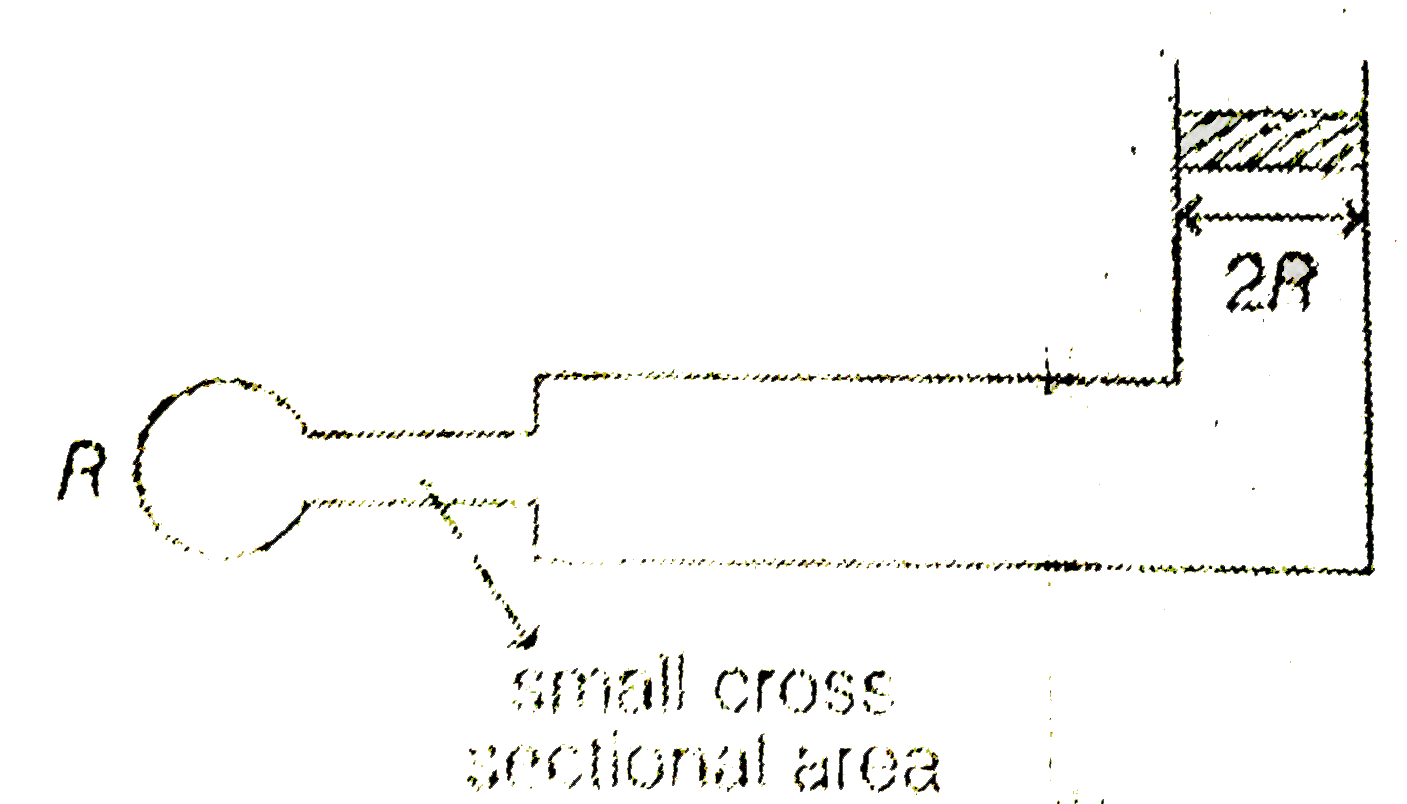A bob of mass m is tied with a thread and is made to move in a circular path on a frictionless table surface about point 'O' as shown in diagram. A hypothetical electric field in radial direction exists along the table surface. In this condtion the bob is uncharged and tension is thread is T. If bob is given some charge-

Tension in thread must increase
Tension in thread may increase or decrease
Tension in thread will remain unchanged
Tension in thread must decrease
The correct Answer is:B
Step by step video, text & image solution for A bob of mass m is tied with a thread and is made to move in a circular path on a frictionless table surface about point 'O' as shown in diagram. A hypothetical electric field in radial direction exists along the table surface. In this condtion the bob is uncharged and tension is thread is T. If bob is given some charge- by Physics experts to help you in doubts & scoring excellent marks in Class 12 exams.
Updated on:21/07/2023Topper's Solved these Questions
Similar Questions
A bob of mass m is tied with a thread and is made to move in a circular path on a frictionless table surface about point 'O' as shown in diagram. A hypothetical electric field in radial direction exists along the table surface. In this condition the bob is uncharged and tension in the thread is T. If bob is given some charge-

View SolutionA block of mass m and charge q is connected to a point 0 with help ofan inextensible string. The system in on a horizontal table. An electric field is switched on in direction perpendicular to string. What will be tension in string when it become parallel to electric field?

View Solution
Knowledge Check
A small disc can slide in a circular path on a frictionless inclined plane inclined at an angle of 30∘ with the help of a thread as shown. Mass of the disc is m and acceleration due to gravity is g. If the disc is released, when the thread is horizontal, expression for the tension in the thread at the lowest point is
 A12mgB32mgC2mgD3mg
A12mgB32mgC2mgD3mgA simple pendulum of length l is set in motion such that the bob, of mass m, moves along a horizontal circualar path , and the string makes a constant angle θ with the vertical. The time period of rotation of the bob is l and the tension in the thread is T
At=2π√l/gBt=2π√lcosθ/gCT=4π2mlt2DThe bob is in equilibriumA bob in tied to a string of length l & and kept on a horizontal rough surface as shown in the figure when point O of the string is fixed. The bob is given a tangential velocity V0 keeping the string taut as shown in figure. Find the tension in the string as a function of time. The coefficient of kinetic friction is μ.
 Am(v0−μgt)2/1Bm(v0+μgt)2/1Cm(v0+>)2/1Dm(v0−>)2/1
Am(v0−μgt)2/1Bm(v0+μgt)2/1Cm(v0+>)2/1Dm(v0−>)2/1

Two blocks of mass M and 3M (in kg) are connected by an inextensible light thread which passes over a light frictionless pulley. The whole system is placed over a fixed horizontal table as shown.The coefficient of friction between the blocks and table surface is μ. The pulley is pulled by a string sttached to its centre and accelerated to left with acceleration a(ms2). Assume that gravity acts with constant acceleration g(ms2) downwards through the plane of table. Then:
(a) Find the forizontal accelration of both the blocks (Assume that both the blocks are moving.)
(b) What is the maximum acceleration a, for which the block of mass 3 M will remain stationary?
View SolutionAn object of mass m is submerged completely inside water filled in a container kept on a horizontal surface as shown. The object is tied to the bottom of the vessel by a massless, thin thread. In equilibrium, the tension in the thread is T. The relative density of the object is :

View SolutionA puck of mass m is moving in a circle at constant speed on a frictionless table as shown in the figure . The puck is connected by a string to a suspended bob, also of mass m, which is at rest below the table. Half of the length of the string is above the tabletop and half below. What is the magnitude of the centripetal acceleration of the moving puck ? Let g be the acceleration due to gravity.

View SolutionSoap bubble of radius R is blown at one end of a pipe of circular of circular cross-section of radius R as shown in diagram. On the vertical portion of pipe, there is a piston of mass m. T is surface tension of liquid.

If piston is slightly displaced in downward direction, then its acceleration when radius of bubble grows to 2R is
View SolutionTwo points charges are placed on x-axis as shown, a = 1 cm, q=1μC , mass of each particle m=6g. The charges are tied at the end of an inextensible string of length 2a. The whole system is free to move on a horizontal frictionless surface.

Now suppose a third charge of equal value +q is fixed at the point (a/2,0) and the system of charges A and B is released. There is no friction between third charge and string. Find the maximum velocity of the system of charges A and B.
View Solution

